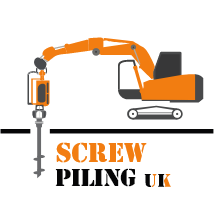Underpinning
THE OVERVIEW
Using screw piles for underpinning is a contemporary and efficient technique in the field of foundation repair, aimed at reinforcing and securing buildings that are experiencing issues such as subsidence, instability, or ground settlement. This method is especially valuable in cases where traditional underpinning approaches might be too damaging to the surrounding area, too disruptive for the occupants, or simply ineffective due to the unique challenges posed by the site’s specific conditions or the nature of the soil.
The process of integrating screw piles into underpinning projects is thorough and involves a series of well-defined steps, each vital to the success of the foundation stabilization effort. Initially, a detailed assessment of the foundation and the surrounding soil is conducted to understand the extent of the damage and the underlying causes.
Screw piles are transforming the underpinning process in construction, offering a faster, more efficient, and less invasive alternative to traditional methods. Highlights include their quick installation, minimal environmental impact, and cost-effectiveness, making them a superior choice for modern foundation needs.
THE PROCESS
Initial Assessment
A thorough evaluation of the building and its foundation is conducted to understand the extent of the damage and the underlying causes. This may involve geological surveys and soil testing to assess soil conditions and determine the depth of stable soil layers.
Design Phase
Based on the assessment findings, a customized screw pile design is developed. This includes determining the appropriate length, diameter, and helix size of the screw piles to ensure they can support the structure’s load and reach stable ground.
Site Preparation
The area around the foundation is prepared for installation. This involves clearing any obstacles and ensuring that there is access for the installation equipment.
Installation of Screw Piles
Specialized hydraulic machinery is used to drive the screw piles into the ground. The piles are screwed into the soil until they reach the predetermined depth and required torque, indicating they have securely anchored into stable soil layers.
Load Transfer
Brackets are attached to the top of each screw pile and then connected to the existing foundation. This step is crucial as it transfers the structural load from the unstable soil to the screw piles, effectively stabilizing the foundation.
Adjustments and Leveling
If necessary, adjustments are made to ensure the foundation is level. The screw piles allow for some degree of adjustability, which can be used to correct foundation settlement or tilting.
Final Inspection and Testing
Upon completion of the installation, a final inspection and load testing may be conducted to ensure the screw piles are securely installed and capable of supporting the structure.
THE BENEFITS
Rapid Installation
Screw piles can be installed quickly, significantly reducing project timelines compared to traditional underpinning methods.
Minimal Disruption
The installation process is less invasive, with minimal disturbance to the surrounding area. This is most beneficial in urban settings or landscaped properties.
Immediate Load Bearing
Screw piles can bear loads immediately after installation, allowing construction or stabilization work to proceed without delay.
Versatile Application
Suitable for a wide range of soil types and conditions, screw piles can be used in various environments where other underpinning methods may not be feasible.
Cost-Effective
The efficiency of the installation process and reduced need for extensive excavation can lead to lower overall project costs.
High Strength and Durability
Screw piles are designed to provide strong and durable support, capable of withstanding environmental stressors and load demands.
Adjustable and Customizable
The length and design of screw piles can be adjusted to meet the specific needs of a project, ensuring optimal performance.
Environmentally Friendly
The installation process has a lower environmental impact compared to traditional underpinning methods, with less soil excavation and displacement.
No Curing Time Required
Unlike concrete-based methods, screw piles do not require curing time, further speeding up the stabilization process.
Reusability
In certain cases, screw piles can be removed and reused, offering a sustainable option for temporary structures or future site modifications.
Projects requiring Underpinning
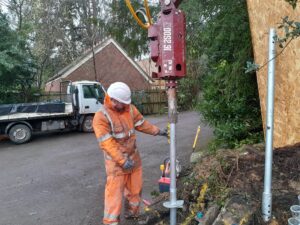
29 Beaucroft Lane, Wimborne
The Wimborne residential project, featuring a garage extension, concluded remarkably ahead of time in just 2 days instead of the planned week, resulting in a 56m² double garage. Utilising an 8-ton Kubota x60 Excavator and 17 screwpiles with a 5m average depth, this efficient completion was achieved in collaboration with MPS Building LTD.
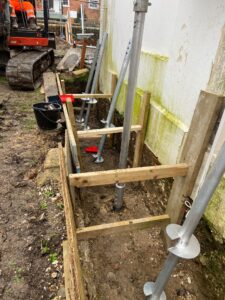
22 Crichel Mount, Sandbanks
In our recent residential extension project, 22 screwpiles were installed to strategically enhance the existing garage and terrace area. Executed by the dedicated team at Screwpiling UK for MPS Building Contractors, the renovation achieved an average depth of 6 meters for each 76mm diameter screwpile within a remarkable 1-week timeframe, surpassing expectations. The project utilized our 8-ton Kubota excavator, demonstrating efficiency and excellence in execution.
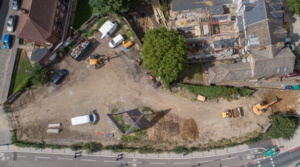
Rosebank Way, Acton
Nestled in North Acton, West London, within the London Borough of Ealing, Rosebank Way is at the heart of a dynamic revitalization, fuelled by the upcoming Elizabeth Line (Crossrail) from Acton Main Line. Serving as a catalyst for ongoing investment, the transit project is set to boost connectivity and has the potential to elevate property values and spur economic activity.
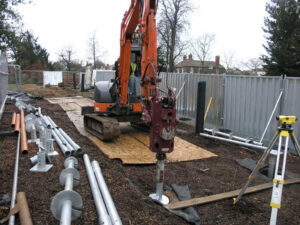
4 St James’ Villas, Winchester
Our recent residential extension project highlights our dedication to quality and efficiency. Despite challenges posed by restricted access, our specialized equipment, including the 65kg 700H Handheld Torque, enabled us to install 22 screwpiles at an impressive average depth of 6 meters.

